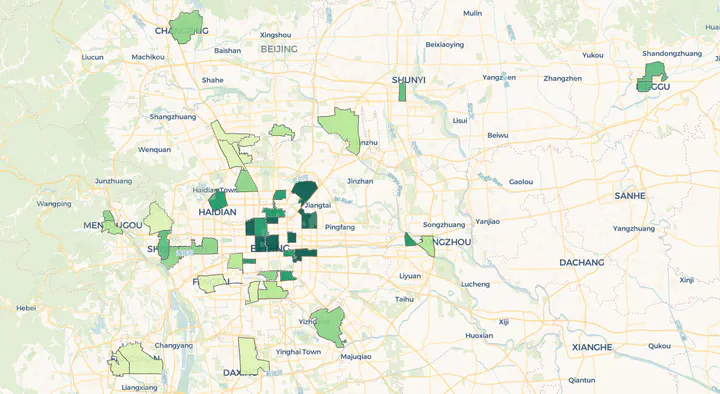Big Data Monitoring of Livelihood Indicators in Beijing
Jan 1, 2019
·
2 min read

Project Duration: 2019-2021
This multi-year project, funded by the Beijing Civil Affairs Bureau, focused on the comprehensive monitoring and evaluation of livelihood indicators across various dimensions and geographic scales. The project spanned three phases:
- 2019: Participated in the inaugural phase, contributing to data integration and initial indicator evaluation.
- 2020: Led the second phase, overseeing project design and implementation, including methodological refinements and analytical advancements.
- 2021: Contributed to the third phase, focusing on advanced data analysis and cross-sectional evaluations.
Key Features:
- Temporal and Spatial Coverage: The project incorporated multiple temporal cross-sections (annual and quarterly) and geographic levels (township, urban district, and citywide) to provide a comprehensive analysis of Beijing’s social and economic dynamics.
- Multi-Source Big Data: Leveraged diverse data sources, including administrative, survey, and social media data, to capture the multi-faceted nature of public welfare.
- Indicator Diversity: Monitored over 60 indicators across 12 dimensions, enabling detailed assessments of urban patterns, functional sectors, and grassroots governance units.
Contributions:
- Systematic Evaluation Framework: Developed a robust methodology to assess the interplay of government actions, market behaviors, and societal participation in public welfare.
- Insights into Social Perception: Combined sentiment analysis and content analysis to understand public satisfaction and perceived quality of life.
- Geospatial Analysis: Applied spatial computing to evaluate the distribution and accessibility of public services, identifying disparities and recommending equitable interventions.
The findings provided actionable insights to enhance public welfare services and informed policymakers on how to better align resources with community needs. This project serves as a benchmark for data-driven approaches in urban governance, particularly in balancing equity and efficiency in public service delivery.